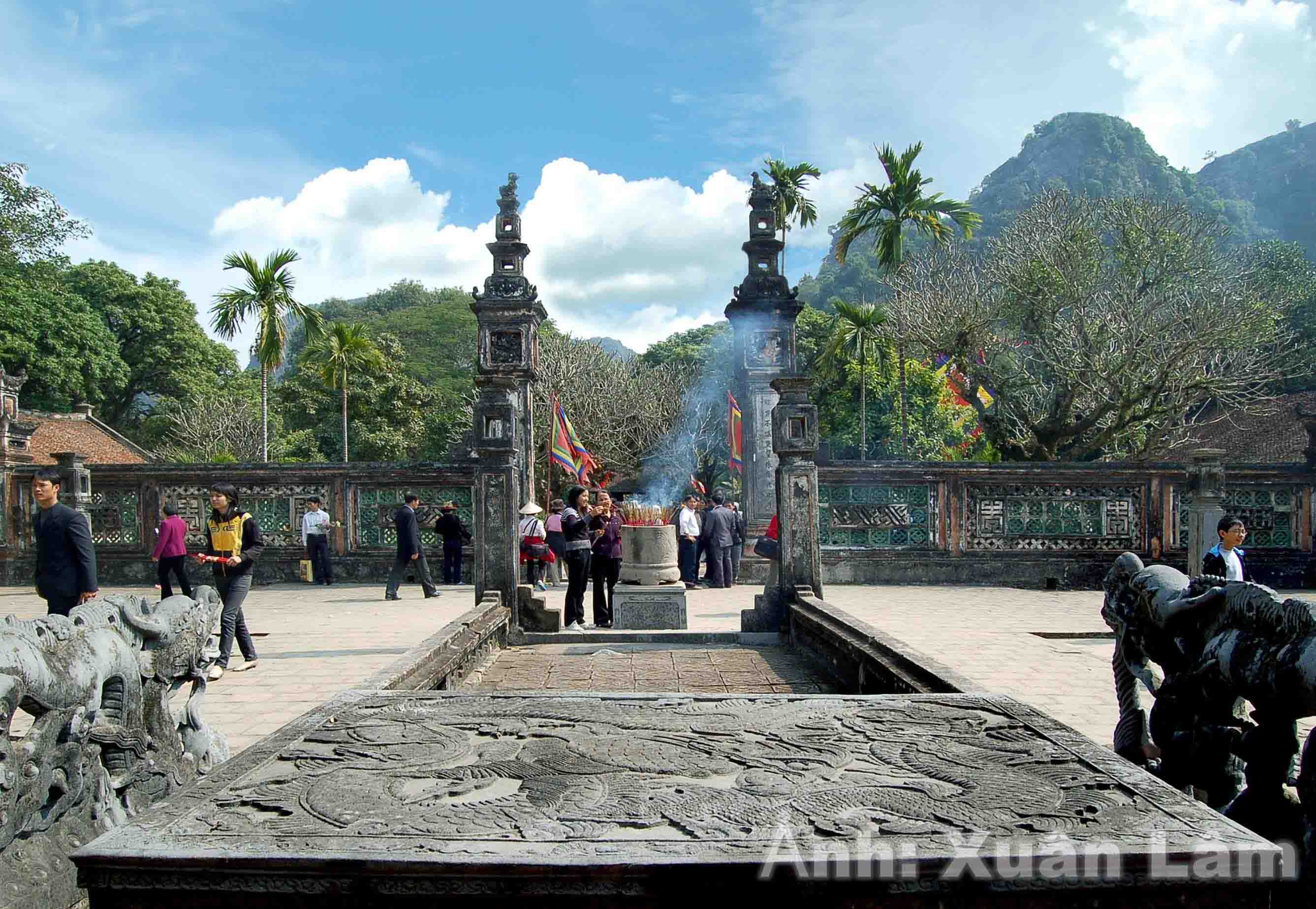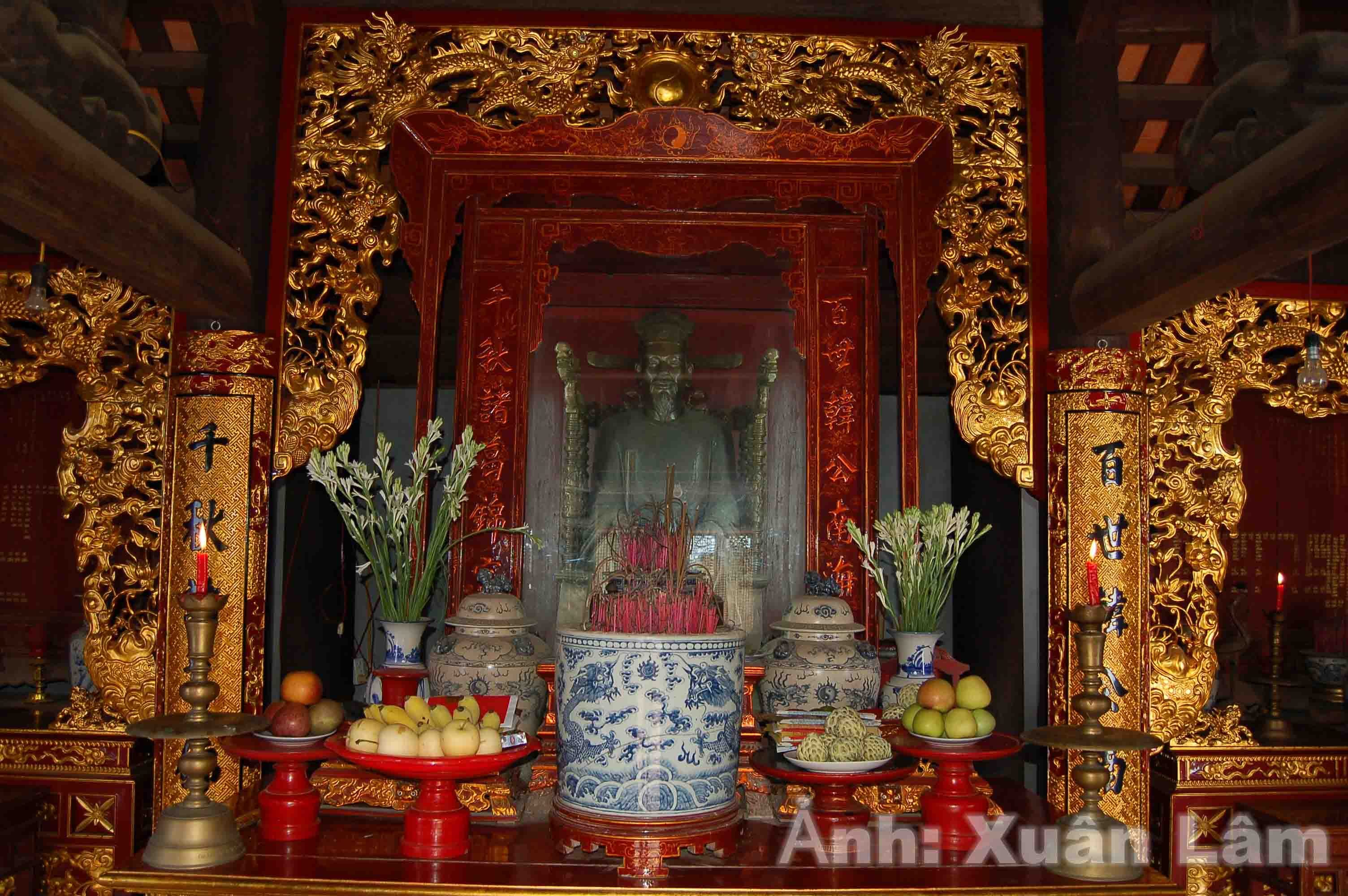The outer layer is Ngo Mon Quan (outer gate) with 3 tiled compartments. Through a short courtyard to the second class is to Nghi Mon (inside gate) 3 compartments built of ironwood architecture in 3 rows of pillars. In the four outer corners of the inner door, there are four tall pillars. Going all the way, through two large pillars, you will reach the dragon yard. In the middle of the dragon yard, there is a stone screen around embossed, 1.8m long, 1.4m wide. The two sides of the dragon’s fall have 2 adoring stone clams, carved on two beautiful monolithic green rocks.
Stone sieve (National Treasure)
Stepping from the dragon yard is the 5-room Bai Street, unique architecture. Next is Thieu Huong, built in the style of a pipe, where the four pillars of the Dinh dynasty were worshiped. Going to the end of the Burning Hall, visitors enter the main palace of 5 compartments. The nave worships the statue of King Dinh which is cast in bronze and placed on a monolithic green stone altar. On either side of the stone pedestal are two stone dragons, carved in the style of a saddle. The right compartment worships the statues of Dinh Hang Lang (outside), Dinh Toan (inside) all facing the North, are the two younger children of King Dinh Tien Hoang. The left compartment worships the statue of Dinh Lien facing the south, which is the eldest son of King Dinh Tien Hoang.
Statue of King Dinh Tien Hoang
Dinh Tien Hoang Temple is a unique architecture in the art of wood and stone carving by Vietnamese folk artists in the 17th – 19th centuries. Dinh King Temple is located among the canopy of giant trees, orchards, The interweaving bonsai creates the superficial and majestic appearance of the temple.
Source: Collected internet.


